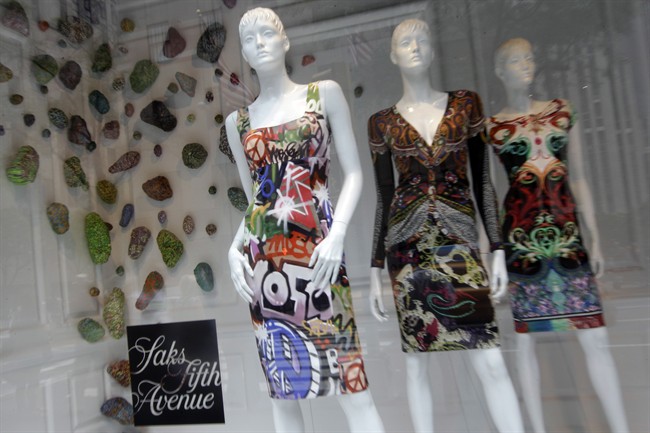Hudson’s Bay Co. made a big splash last year when it bought U.S. luxury retailer Saks Inc. and announced plans to bring the high-end retailer north.

It immediately drew interest from other opulent-focused operators.
Nordstrom has planted its flag at several marquee locations across Canada. And since, there’s been a drum beat of announcements from luxe clothing lines and stores wanting a piece of the affluent Canadian shopper.
“One thing about this luxury market is that there’s a certain herd mentality,” Ed Strapagiel, a retail consultant in Toronto, said. “One store launches, others take an interest.”
Hudson’s Bay said Friday it will be opening its first Saks Fifth Avenue in Canada in the spring of 2016, a move that will follow the opening of the first Nordstrom location next week, in Calgary.
“The Canadian luxury market is growing and the competitive landscape continues to be underdeveloped,” Richard Baker, the head of Hudson’s Bay said on a conference call.
But while the number of names entering the market may be rising fast, analysts and experts are torn over whether or not Canada has the bench strength of deep-pocketed shoppers to support the burst in high-end retail.
Rich getting richer
On one hand, Canada’s wealthiest are becoming more so, providing them with more income to indulge.
“We do know that incomes are growing faster at the upper end of the income spectrum,” Doug Stephens, principal analyst at Retail Prophet in Toronto said. “From that standpoint, a small percentage of Canadians are doing significantly better in terms of income.”
Indeed, a CIBC report from late March put numbers to the sentiment. The report said compensation at the top end of the income spectrum was growing nearly twice as fast as wages in low-paying industries.
Hudson’s Bay and Nordstrom, which are planning to open roughly a dozen stores between them at least in the coming year or two, will benefit from that, CIBC says.
It seems rich Canadians aren’t as rich as rich Americans, CIBC said. “Despite the rising trend of inequality” in Canada (following the lead of the U.S.), “both pre- and after-tax income in Canada is not nearly as unevenly distributed as it is stateside,” the Canadian bank’s economist said.
An annual income of $360,000 earns an American entry into the one-percent club, compared to the comparatively leaner $201,000 in Canada, meaning even the richest Canadians don’t have nearly as much discretionary money to play with.
Aspirational class
Still, high-end stores like Saks also rely on aspirational shoppers for sales — from those consumers who scrimp and save for the prized fashion item, or are willing to run up credit cards to buy the latest luxury trend.
Strapagiel said that despite high levels of consumer debt, there’s still an appetite among some middle-income shoppers to indulge. “They’re not tapped out fully,” he said.
MORE: Dollar stores in expansion mode as more Canadians feel cash pinch
But others wonder how much is left in the tank. Hudson’s Bay head Baker said Friday he sees “sustained strength of affluent shoppers” in Canada.
Stephens said he suspects a certain portion of the market is being supported by unsustainable spending.
“That’s the question in my mind: How much of the seeming market for luxury in Canada is a consequence of people just maxing out their credit potential,” Stephens said. “I wouldn’t be surprised if we at some point experience something like what happened in the U.S.”
Stephens said in the wake of the U.S.’s deepest recession since the Depression, those brands went looking to international markets for growth, including Canada.
WATCH: Saks coming to Canada



Comments